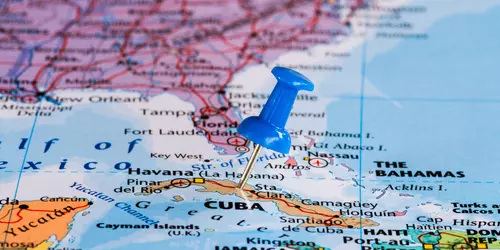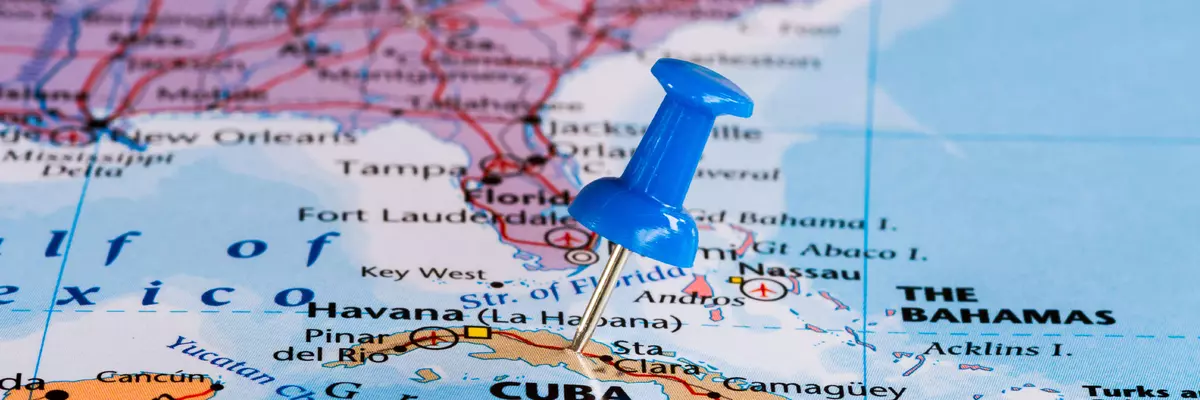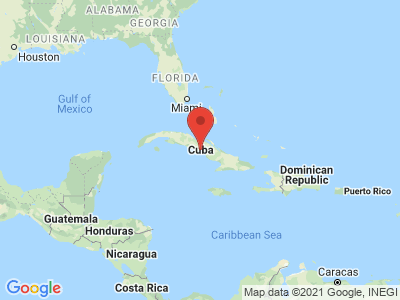Climate Table Cuba
Jan | Feb | Mar | Apr | May | Jun | Jul | Aug | Sep | Oct | Nov | Dec | |
|---|---|---|---|---|---|---|---|---|---|---|---|---|
| Max. Temperature | 29° | 30° | 31° | 31° | 32° | 33° | 34° | 34° | 33° | 32° | 32° | 30° |
| Min. Temperature | 18° | 19° | 20° | 21° | 22° | 23° | 24° | 24° | 24° | 23° | 22° | 20° |
| Sun Hours | 7 | 7 | 7 | 8 | 9 | 9 | 9 | 8 | 7 | 6 | 7 | 6 |
| Water Temperature | 25° | 24° | 25° | 26° | 27° | 27° | 28° | 28° | 28° | 28° | 27° | 27° |
| Rain Days | 3 | 4 | 5 | 6 | 7 | 6 | 5 | 5 | 6 | 7 | 5 | 3 |
The climate year of Cuba
When you think of Cuba, you think of Havana, mojito and hot rhythms. Mojito, a classic cocktail invented in Cuba at the beginning of the 20th century, consists mainly of the typical Cuban national drink: rum. The alcoholic drink is mostly distilled from sugar cane, a plant that has been cultivated on large plantations in the interior of the country for centuries. Cuba is an island nation consisting not only of the main island of the same name - which is also the largest in the Caribbean - but also of over 4000 smaller islands. The climate is tropical, and it can get very hot, especially in the southeast. Especially in and around Santiago de Cuba the highest temperatures are measured between May and September. With average temperatures of 19 to 20 °C, it is much cooler, especially in the Cuban mountain ranges.
General information about Cuba
Besides perfect bathing temperatures - the water is never cooler than 20 °C - fantastic white sandy beaches and delicious mojito, Cuba has a number of interesting destinations to offer. Worth seeing are not only the large cities with their ancient charm, such as the capital Havana or the well-preserved colonial city of Trinidad, but also the unique landscape. One of the most interesting landscapes is the Valle de Vinales, a valley located in the middle of the Organ Pipe Mountains (Spanish "Sierra de los Organos"). Here is also located the "Mural de la Prehistoria", a colorful painting created in 1961 by the Mexican artist Leovigildo González Morillo in the middle of free nature. Also beautiful is the National Park "Gran Parque Nacional Sierra Maestra" located near the city of Santiago de Cuba, which contains the highest mountain in Cuba, Pico Turquino, 1974 meters high.
Tourism Cuba
During the course of a year, temperatures in Cuba fluctuate only slightly. In the months of October to February it is comparatively cool with an average of 25 °C. Especially between May and September, however, temperatures climb to over 30 °C. The climate on the Caribbean island is determined by the northeast trade winds. The rainy season falls in the hottest months between June and October, with June being the wettest month. However, the rainy season does not mean that it rains constantly. Rather, short, heavy showers cool the air somewhat for a short time. Also between June and November is hurricane time in Cuba. The archipelago is regularly hit by tropical cyclones. The dry season with little precipitation falls in the months between November and April.


